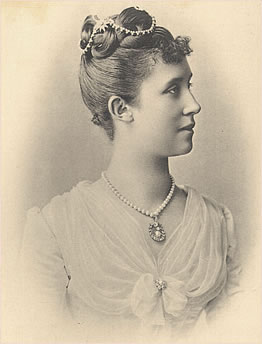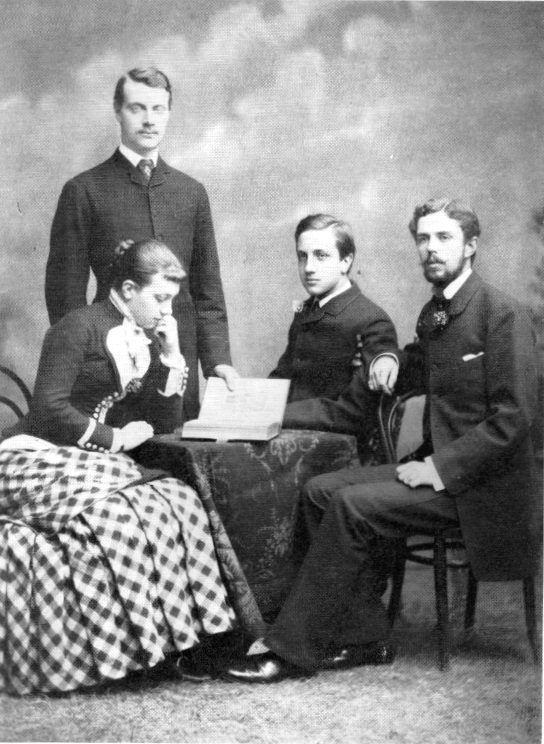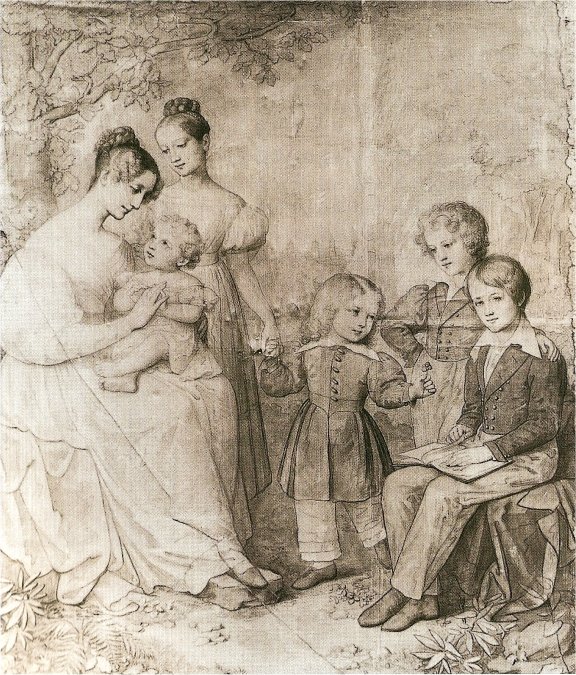by Scott Mehl © Unofficial Royalty 2017
Grand Duchy of Hesse and by Rhine: The House of Hesse-Darmstadt was one of several branches of the House of Hesse. After the fall of the Holy Roman Empire in 1806, the Landgraviate of Hesse-Darmstadt was raised to the Grand Duchy of Hesse, and Ludwig X, Landgrave of Hesse-Darmstadt became the first Grand Duke, Ludwig I. Several years later, at the Congress of Vienna, Ludwig was forced to cede his Westphalian territories but in return was given the Rheinhessen region and the Grand Duchy of Hesse became the Grand Duchy of Hesse and by Rhine. Ernst Ludwig, a grandson of Queen Victoria, was the last Grand Duke of Hesse and by Rhine. With the fall of the German states, Ernst Ludwig refused to abdicate but still lost his throne on November 9, 1918. Today the territory that encompassed the Grand Duchy of Hesse and by Rhine is in the German state of Hesse.
********************

Ludwig I, Grand Duke of Hesse and by Rhine.source: Wikipedia
Ludwig I was the first Grand Duke of Hesse and by Rhine, reigning from 1806-1830. He was born on June 14, 1753, in Prenzlau, Duchy of Zweibrücken, now in Brandenburg, Germany, the eldest son of Ludwig IX, Landgrave of Hesse-Darmstadt and Caroline of Zweibrücken. Ludwig had seven siblings:
- Princess Caroline – (1746 – 1821) – married Friedrich V, Landgrave of Hesse-Homburg, had issue
- Princess Friederike Luise (1751 – 1805) – married King Friedrich Wilhelm II of Prussia, had issue
- Princess Amalie (1754 – 1832) – married Karl Ludwig, Hereditary Prince of Baden, had issue
- Princess Wilhelmina (1755 -1776) – married the future Paul I, Emperor of All Russia, died in childbirth with her baby
- Princess Luise Auguste (1757 -1830) – married Karl August, Grand Duke of Saxe-Weimar-Eisenach, had issue
- Prince Friedrich (1759 – 1802) – unmarried
- Prince Christian (1763 – 1830) – unmarried
Along with his siblings, Ludwig was raised primarily in Buchsweiler, now Bouxwiller, in France, by his mother, while his father was often away with his military career. Ludwig attended the University of Leiden and then traveled throughout Europe. After escorting his sister Wilhelmine to Russia for her wedding to the future Emperor Paul I in 1773, Ludwig remained in Moscow and served with the Russian military. With the rank of General, he fought in the Russo-Turkish War of 1774. In 1776, he was engaged to Sophia Dorothea of Württemberg. However, Catherine II (the Great), Empress of All Russia instead chose Sophia Dorothea as the second wife for her son, the future Paul I, Emperor of All Russia, after Ludwig’s sister Wilhelmine died in childbirth.

Luise of Hesse-Darmstadt; Credit – Wikipedia
The following year, on February 19, 1777, Ludwig married Luise of Hesse-Darmstadt, his first cousin. She was the daughter of Prince Georg Wilhelm of Hesse-Darmstadt and Maria Luise of Leiningen-Falkenburg-Dagsburg. Ludwig and Luise had six children:
- Ludwig II, Grand Duke of Hesse and by Rhine (1777 – 1848) – married Wilhelmine of Baden, had issue
- Princess Luise (1779 – 1811) – married Ludwig of Anhalt-Köthen, had issue
- Prince Georg (1780 – 1856) – married Caroline Török de Szendrö, had issue
- Prince Friedrich (1788 – 1867) – unmarried
- Prince Emil (1790 – 1856) – unmarried
- Prince Gustav (1791 – 1806) – died in his teens
Ludwig succeeded his father in April 1790 as Ludwig X, Landgrave of Hesse-Darmstadt. His reign saw the establishment of constitutional rule in Hesse-Darmstadt, with Catholics and Jews being given equal rights. Having lost significant territory to France, he soon saw the Landgraviate expand when he was given the former Duchy of Westphalia in 1803, as part of the German mediatization. After the fall of the Holy Roman Empire, Hesse-Darmstadt was raised to the Grand Duchy of Hesse, with Ludwig becoming its first Grand Duke, Ludwig I. Some years later, at the Congress of Vienna, he was forced to cede his Westphalian territories, but in return was given the Rheinhessen region which included the city of Mainz. On July 7, 1816, the Grand Duchy of Hesse became the Grand Duchy of Hesse and by Rhine.
As Grand Duke, Ludwig granted the first constitution and worked to establish cultural institutions in the Grand Duchy. He established the court theater in Darmstadt as well as the court library and promoted the arts. He is also credited with creating the Botanical Garden in Darmstadt.
Grand Duke Ludwig I died in Darmstadt, Grand Duchy of Hesse and by Rhine, now in Hesse, Germany, on April 6, 1830, and was succeeded by his eldest son. He was buried in the Darmstadt Stadtkirche until 1910 when his remains were moved to the Altes Mausoleum in the Rosenhöhe in Darmstadt.
This article is the intellectual property of Unofficial Royalty and is NOT TO BE COPIED, EDITED, OR POSTED IN ANY FORM ON ANOTHER WEBSITE under any circumstances. It is permissible to use a link that directs to Unofficial Royalty.
Hesse and by Rhine Resources at Unofficial Royalty






















